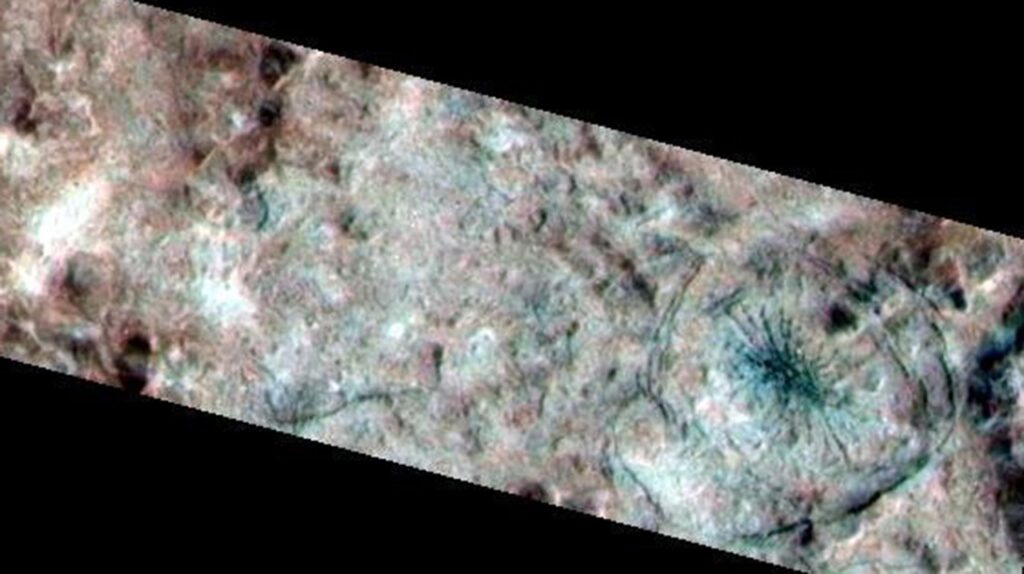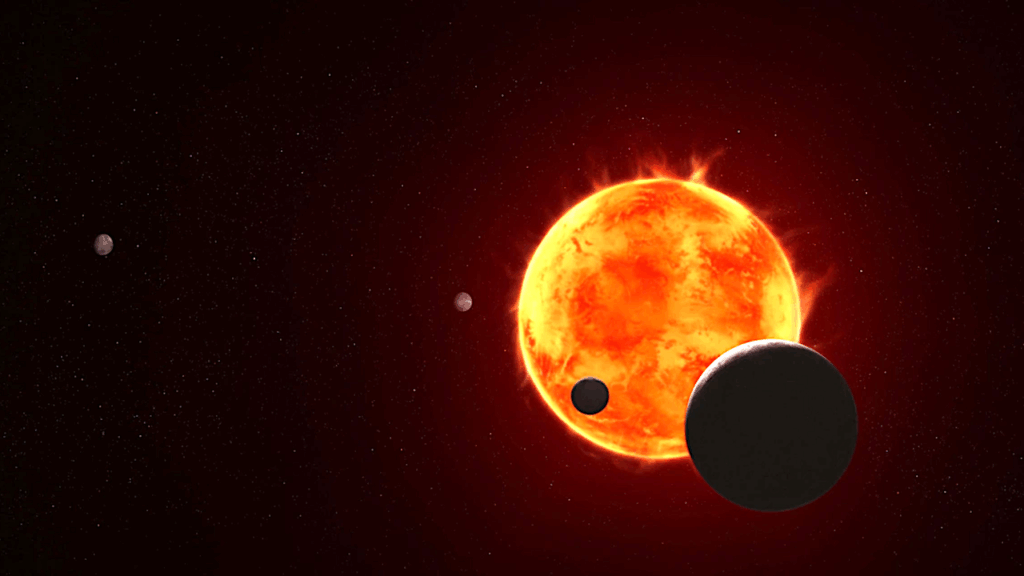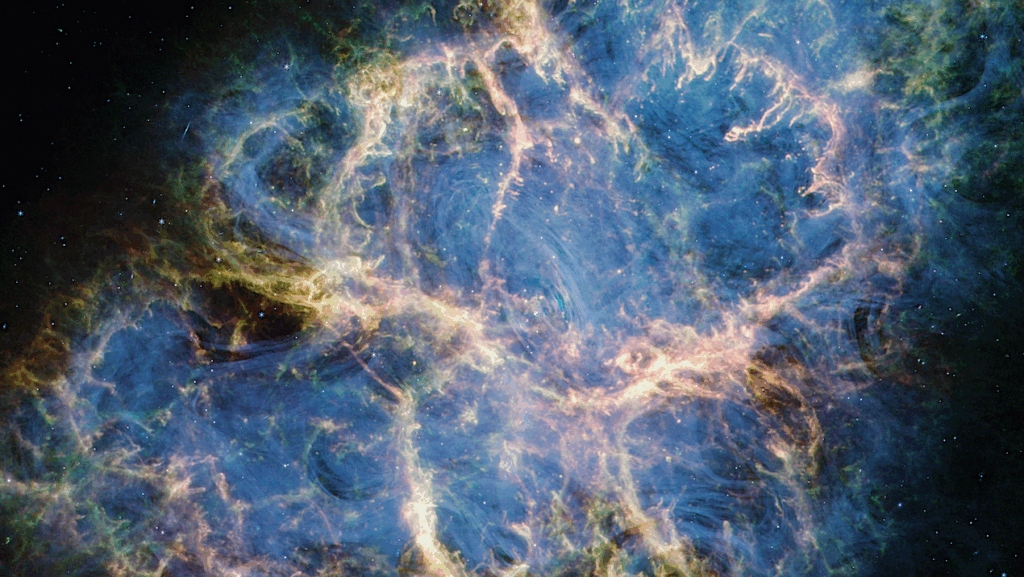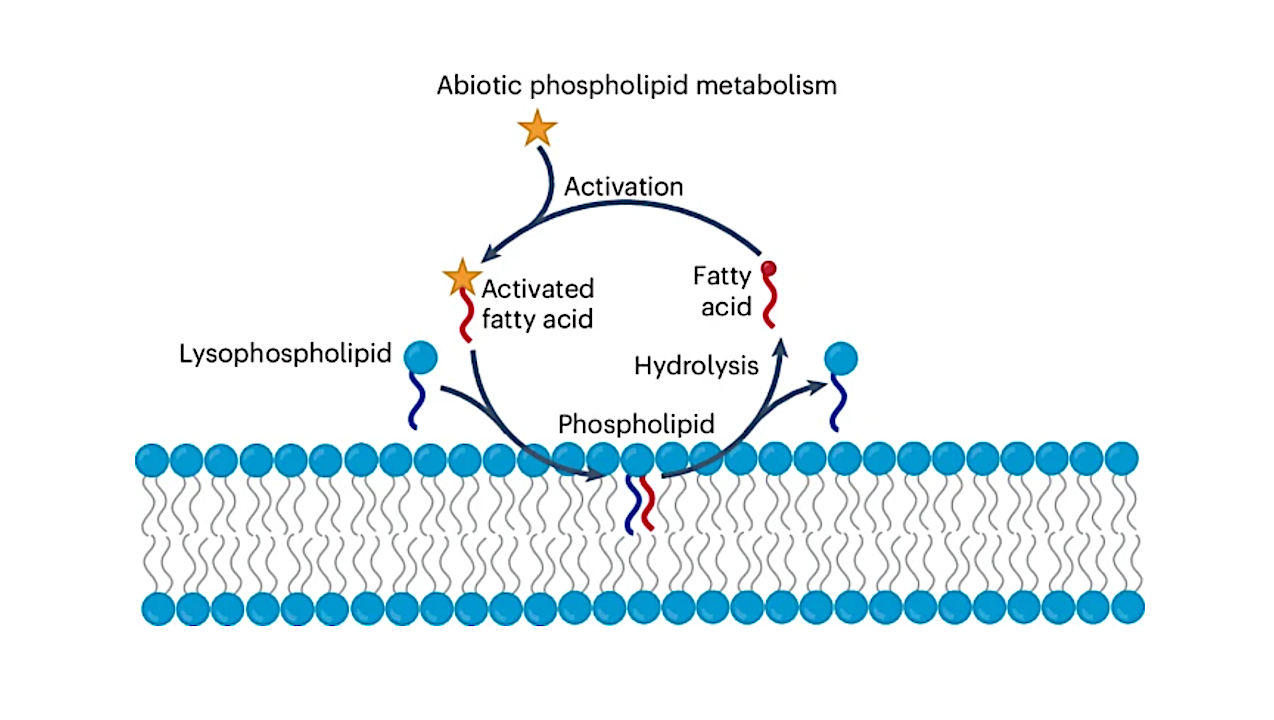Now Reading: A Water-rich Interior In The Temperate Sub-Neptune K2-18 b Revealed By JWST
-
01
A Water-rich Interior In The Temperate Sub-Neptune K2-18 b Revealed By JWST
A Water-rich Interior In The Temperate Sub-Neptune K2-18 b Revealed By JWST
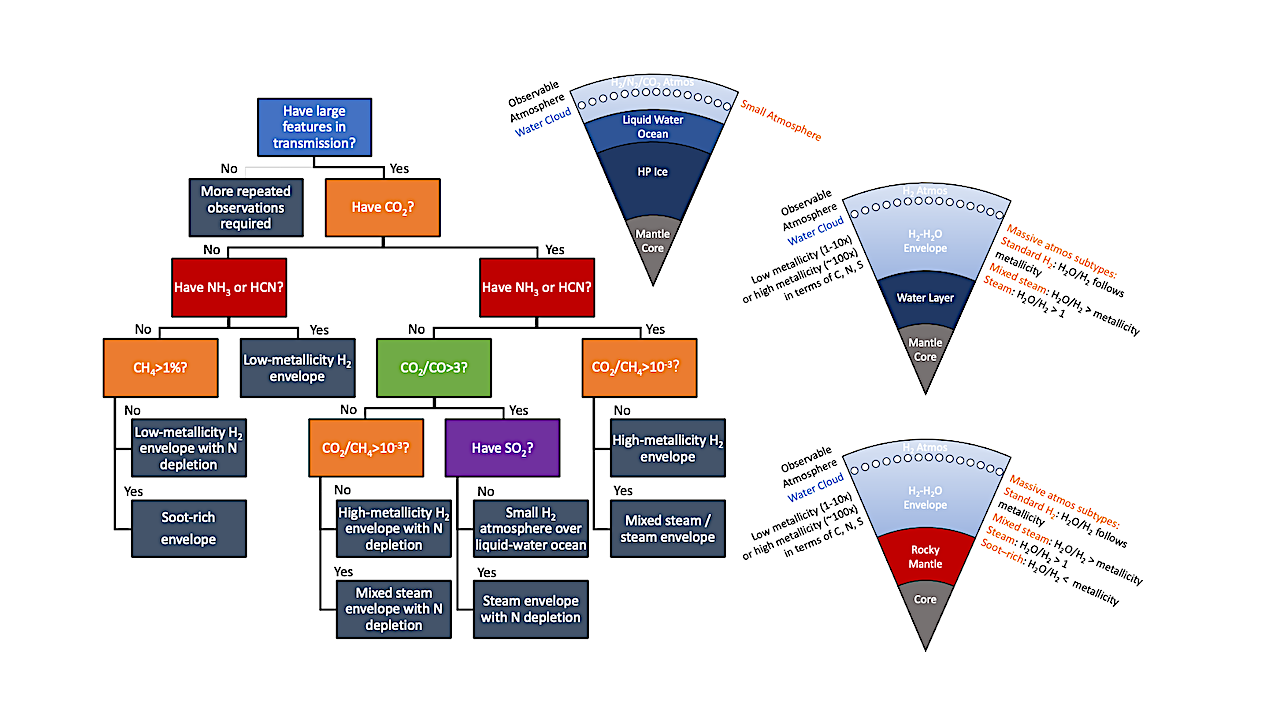
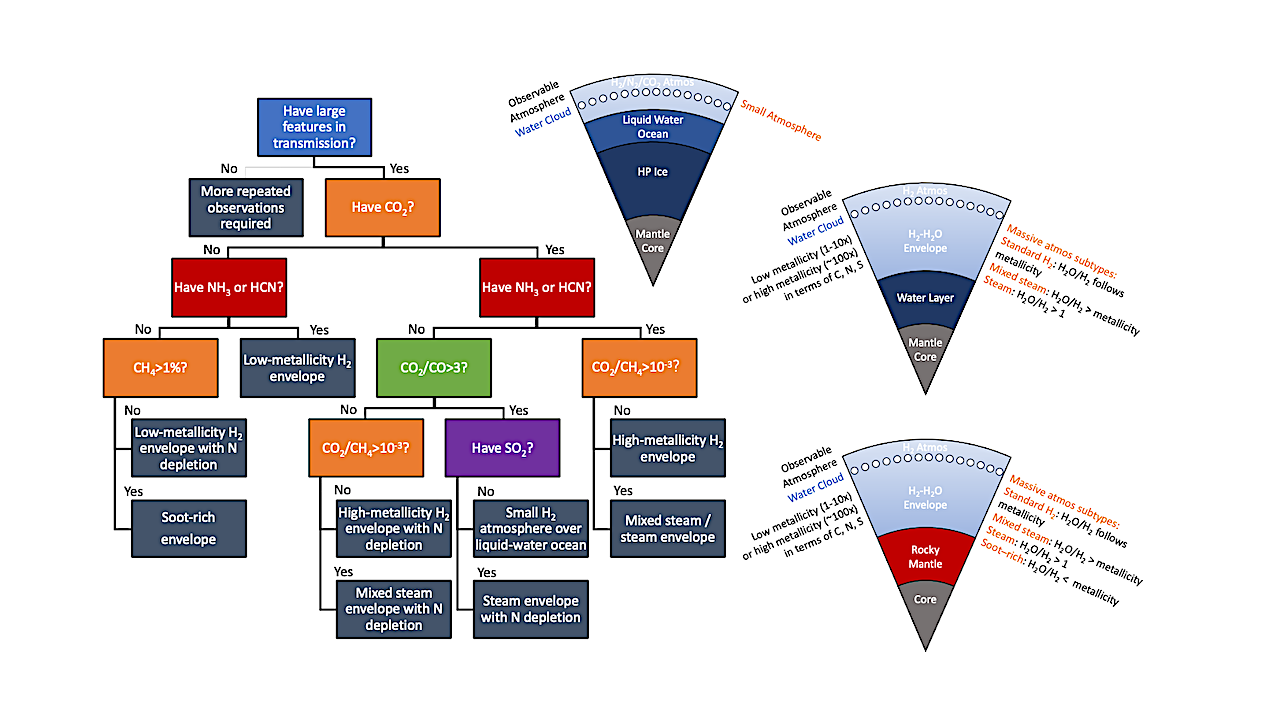
Illustration of the range of possible internal compositions for temperate sub-Neptunes like K2-18 b, and a roadmap to characterize them through atmospheric observations. A liquid-water ocean separating the atmosphere from the interior necessarily implies a small atmosphere, which may be composed of either H2 or heavier molecules. In contrast, a massive atmosphere is expected to be well-mixed with the volatile envelope underneath. We propose characterizing such massive envelopes along two principal axes: the H2-to-H2O ratio and the metallicities defined by carbon, nitrogen, and sulfur. In a standard H2-dominated envelope, the oxygen abundance tracks that of C, N, and S with the solar abundance ratio. In a mixed or steam-rich envelope, oxygen (and thus H2O) is more abundant; in a soot-rich envelope, it is less so. Nitrogen and sulfur may be depleted relative to carbon due to preferential partitioning into the mantle or core. The existence of a water-dominated layer between the envelope and the rocky interior remains uncertain, but is retained here as a possibility. Regardless of envelope composition, water may condense in the atmospheres of K2-18 b and cooler sub-Neptunes, rendering direct H2O measurements from transmission spectra unreliable as diagnostics of the bulk composition. Instead, detecting and quantifying a suite of gases, such as CH4, CO2, CO, NH3, and SO2, and their relative abundances offers a more robust pathway to distinguish among envelope compositions, physical states, and the potential presence of a liquid-water ocean. — astro-ph.EP
Temperate sub-Neptunes Are Compelling Targets For Detecting Liquid-water Oceans Beyond The Solar System. If water-rich and lacking massive hydrogen-helium envelopes, these planets could sustain liquid layers beneath their atmospheres despite sizes larger than Earth.
Previous observations of the temperate sub-Neptune K2-18 b revealed an H2-dominated atmosphere rich in CH4, with moderate evidence for CO2 and tentative signs of dimethyl sulfide (DMS).
Here we present four new JWST/NIRSpec transit observations of K2-18 b. The resulting high-precision transmission spectrum robustly detects both CH4 and CO2, precisely measuring their abundances and firmly establishing the planet’s water-rich nature: either a thick envelope with >10% H2O by volume or a thin atmosphere above a liquid-water ocean.
The spectrum reveals no detectable H2O, NH3, or CO. The absence of atmospheric water vapor suggests an efficient cold trap, while the nondetections of NH3 and CO support the scenario of a small H2-rich atmosphere overlying a liquid reservoir. However, alternative models that include these gases can also reproduce the spectrum within uncertainties, highlighting the need for deeper observations.
The spectrum only contains marginal signals of DMS, methyl mercaptan (CH3SH), and nitrous oxide (N2O), with none exceeding 3 sigma in model preference and all falling below ~2 sigma without imposing a strong super-Rayleigh haze. Meanwhile, our self-consistent photochemical models show that DMS and CH3SH may form abiotically in massive H2-rich atmospheres of high metallicity, making it important to consider additional indicators for their potential use as biosignatures.
K2-18 b, a cool, water-rich world, stands out as one of the most promising temperate sub-Neptunes for exploring the emergence of liquid-water environments in non-Earth-like planets, motivating further characterization of its atmosphere and interior.

Transmission spectrum of K2-18 b compared with models. Five transit measurements using NIRSpec are averaged with offsets taken out between visits (see Appendix C), and the data are binned to ∆λ = 0.1 µm and 0.04 µm for NIRISS and NIRSpec measurements for clarity. The fit shown in blue is the model that maximizes the posterior probability (MAP) in the baseline+DMS retrieval using ExoTR and its 1σ and 2σ boundaries (Section 3.1.1). Spectral contributions from individual gases that increase the transit depth by at least 0.02 × 10−3 relative to the Rayleigh scattering and cloud baseline are shown below. The best-fit model is dominated by CH4 and CO2 absorption. Replacing DMS with CH3SH or N2O, or omitting DMS entirely, does not significantly alter the best-fit model. The self-consistent model shown in brown assumes a massive envelope with an H2-to-H2O ratio of 75:25 and 100× solar metallicity for carbon, nitrogen, and sulfur (Section 3.2.1). The model shown in green assumes a 1-bar atmosphere with 10% CH4, 5 × 10−4 CO2, a temperature-dependent H2O abundance (assuming a planetary Bond albedo of 0.5), and a hypothetical DMS surface flux 20× that of modern Earth (Section 3.2.2). The self-consistent massive-atmosphere model provides a reasonable fit to the data within uncertainties but overproduces NH3, HCN, CO, and CH3SH, leading to excess absorption near 3.0 and 4.6 − 4.8 µm. The small-atmosphere model also shows enhanced absorption near 4.6–4.8 µm due to CO and CH3SH. — astro-ph.EP
Renyu Hu, Aaron Bello-Arufe, Armen Tokadjian, Jeehyun Yang, Mario Damiano, Pierre-Alexis Roy, Louis-Philippe Coulombe, Nikku Madhusudhan, Savvas Constantinou, Björn Benneke
Comments: Submitted to AAS Journals
Subjects: Earth and Planetary Astrophysics (astro-ph.EP); Atmospheric and Oceanic Physics (physics.ao-ph)
Cite as: arXiv:2507.12622 [astro-ph.EP] (or arXiv:2507.12622v1 [astro-ph.EP] for this version)
https://doi.org/10.48550/arXiv.2507.12622
Focus to learn more
Submission history
From: Renyu Hu
[v1] Wed, 16 Jul 2025 20:37:03 UTC (3,424 KB)
https://arxiv.org/abs/2507.12622
Astrobiology, Astrogeology, Astrochemistry,
Stay Informed With the Latest & Most Important News
Previous Post
Next Post
-
 012024 in Review: Highlights from NASA in Silicon Valley
012024 in Review: Highlights from NASA in Silicon Valley -
 02Panasonic Leica Summilux DG 15mm f/1.7 ASPH review
02Panasonic Leica Summilux DG 15mm f/1.7 ASPH review -
 03How New NASA, India Earth Satellite NISAR Will See Earth
03How New NASA, India Earth Satellite NISAR Will See Earth -
 04And Thus Begins A New Year For Life On Earth
04And Thus Begins A New Year For Life On Earth -
 05Astronomy Activation Ambassadors: A New Era
05Astronomy Activation Ambassadors: A New Era -
06SpaceX launch surge helps set new global launch record in 2024
-
 07From Polymerization-Enabled Folding and Assembly to Chemical Evolution: Key Processes for Emergence of Functional Polymers in the Origin of Life
07From Polymerization-Enabled Folding and Assembly to Chemical Evolution: Key Processes for Emergence of Functional Polymers in the Origin of Life












